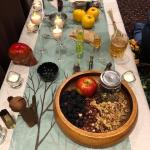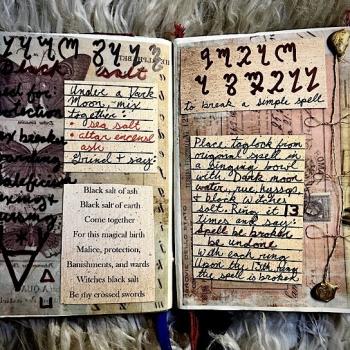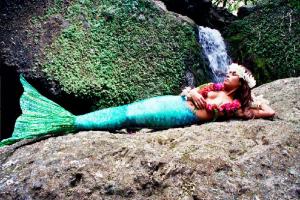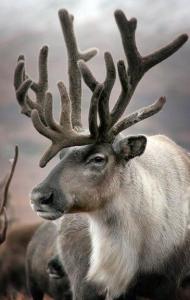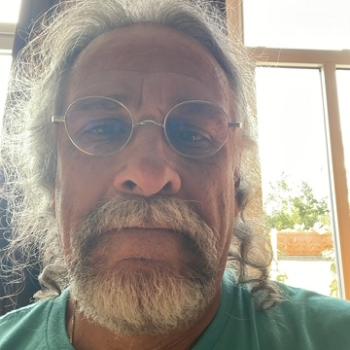Three Sources of Indo-European Myth
This is a simple overview of the most prevalent mythic symbols in Indo-European polytheism and comparative mythology, as it applies to Our Own Magic, which is my pet name for what we do.
I like focusing on Irish, Vedic and Germanic myths mostly because they are the best preserved of all the Indo-European sources, with all three containing strong Proto-Indo-European influences. If a practice exists in these three, it makes the strongest case that they are Proto-Indo-European, especially when supported by archeology, linguistics, and anthropological study.
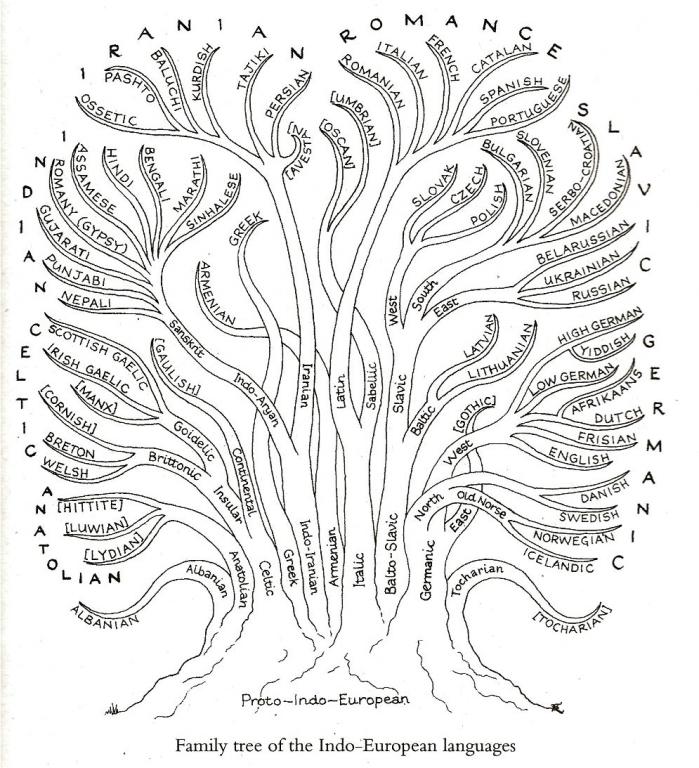
The Irish Mythological Cycle contains the base set of myths about the gods of the Gaels. The Book of Invasions and the Cath Maige Tuired are part of these. The Book of Invasions was written between 1151 and 1224 AD(Koch 1125–6). The Cath Maige Tuired, which is known as the Second Battle of Maige Tuired, was compiled in the 16th century from material dating back to the 9th century(Murphy 17-24). These are a group of stories about the primordials and the gods. The themes are rooted in the ancient Indo-European conflict between the gods of nature and the gods of human traits, for example, smithing and war vs fertility and land. The first functional gods of sovereignty, allied with the warrior gods defeat the natural gods and welcome into their tribe, the Fir Bolg (Ó hÓgáin 366). This myth, the first battle of Maige Tuired, was written down in the 8th century CE by unknown authors(367). These tracts are preserved by Christian monks, so we have to look at them with discretion. The first battle is thought to be a literary fabrication (367). Even if this is the case, emergent from it is the tripartite ideology. The Fir Bolg, or men of dirt, are the gods of the land, one-third of the children of Nemed (369).
Indian myth comes from the four Vedas called the Samhitas or “Collections” (Puhvel 45). The Brahmin were the composers of these works and their name means effective verbal construct, formula, prayer’. The Rg Veda is a body of hymns to the gods. It shows us that regardless of worldview, praise is fluid. It is totally non-christian in nature but it is in Sanskrit and accurate translations are hard to come by. The Sama-Veda is for chanting, Yajur-Veda is for liturgical instructions, and the Atharva-Veda contains magical spells and incantations used by the Atharvan ‘magical’ priests, a kind of Vedic Magi. All four of these are ancient, however, the Rg Veda is older with its origin in 1500 to 1200 BCE (Wetzil). The Brahmin of that time, the Rishi wrote down the Vedas, not as a unit, but as a richness from several sources, regions, and peoples(Staal 68).
Icelandic myths and the myths of the Norse are the best preserved of the Germanic myths, probably due to the island’s insular nature and late conversion to Christianity. Iceland remained heathen until the late ninth and tenth centuries(Puhvel 190). Snorri Sturluson wrote the Edda or Prose Edda around the year 1220. The other Edda is the Poetic Edda and it is a compilation of different sources. Modern heathen reconstructionists and scholars are wary of the dualism in Snorri’s Edda and think it speaks to the same good/evil dualism of Christian and Zoroastrian origin. But to the same degree that no part of Irish myth is untouched by Christians, we look at these myths with a side-eye with regard to extrapolating their true underlying nature. For us, tools like the tripartite ideology and comparative mythology reveal how we can decide to see the gods. Our problem is simple, the myths written by Christians are problematic, the myths that weren’t are either localized to a tropical region or drifted away from Indo-European principles. An example of this is the shift toward the Capitoline Triad away from prior roman divine triads. So the region we’re aiming for is a middle spot between Christian sources on the left, Mediterranean myths on the right, with Vedism in the center. Vedism is useful for worldview comparisons, comparisons of the gods, and magical comparisons. Seasonal and celebratory comparisons are confirmed through Vedic and Hindu cow worship. This helps us sift out the Christian and non-indo-European polytheistic parts. Cow worship persisted in Ireland into Christian times, as did sport-raids on a neighbor’s cattle on certain holy days. Looking at all the Indo-European paganism as a comparative whole is the only way we can get a clear picture of any single one of them.
Comparison of Creation, Divine War, and the Dead
Creation
There are no Irish creation myths. Instead, the Christian Scribes tied the lineage of all primordial beings back to Noah(Rees, 28). The first invasion we have is that of Cessair who we think is actually Banba (CÉITINN)(Rees, 115). Cessair’s father Bith’s name means ‘Cosmos’ or ‘World’, and so is the possible primordial Giants that Purusha and Ymir are, remnants of the older Indo-European tradition of creation through sacrifice. But that is only speculation based on qualities of the myths. For instance, the place where Cessair landed has mounds named after Banba. In the first invasion, Cessair and 50 maidens along with Fintan and Bith come to Ireland before the flood. When the deluge occurs they all die except for Fintan who survives under the sea as a salmon until the next invasion comes. He recounts part of the tale again in the Colloquy between Fintan and the Hawk of Achill(Ó hÓgáin 251).

There are several tales of Vedic creation. The one that concerns us the most is one that parallels to the Norse creations myths, and that is the dismemberment of Purusha because it parallels that of Ymir’s dismemberment. In this tale, Purusha, or Man, is many-handed, headed, footed, and armed. He is a multitude in one. Then he is dismembered into the many parts of the world and into mankind. The three functions and the sudras are made from his parts as well. The nine Indo-European elements are made from him, Stone, Earth, Sea, Tree, Wind, Sun, Moon, Cloud, and Heavens.
I believe that Christians would have redacted, if time itself had not, any appearance of Bith’s dismemberment in story or folklore if it existed. If Bith is the World as his name suggests, then his daughter Banba is Ireland(3) who drowned as Banba is both the name of one of the three land goddesses of Ireland and means “‘[place of] woman’s death’”(30). This slots in nicely with Ymir and Purusha myths, there is a sacrificer who oversees the dismemberment and arrangement of the elements into the world. In an eighth-century manuscript, Banba is the first person along with her 150 men to enter Ireland. Since Fintan is called the Ard Brehon, or Chief of Judges, and since scholars think he is a diminished otherworldly god, we put these clues together which leads us to gain a specific thing that is lost: the creation myth that places Fintan in his rightful place as proportioner and a primeval incarnation of Manannan mac Lir. The cause for connecting Mac Bochra(Son of the Ocean) and Mac Lir(Son of the Sea) is as obvious(Ó hÓgáin 251, 329). The Rees brothers tie the five peoples of Vedic paganism to the five invasions fairly convincingly.
Divine Wars in IE Myth
In Vedic texts, the war between the Asuras, magic-wielding demons, and the Devas, the gods, marks the first divine war in the mythology. This is on a mythological scale as opposed to the Mahabharata which is an epic and heroic level divine war. In fact, some of the characters, Aryaman for example, from the Asuran war are epicized and appear in the Mahabharata as Bhaga (Littleton 91). This war primarily took place between Vtra and Indra. Indra is the 2nd functional warrior god, who represents unbridled force often used to restore and maintain sovereignty. When Vtra is killed, the waters are released in addition to the Dawn. Indra is every bit the macho deity Lugh is later in our discussion. Vtra means obstructor, similar to the binder that Mitra is (Puhvel 50).
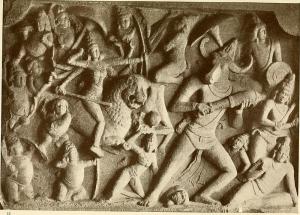
In the Irish texts, there are two divine wars, however, the parallel to the Asuran war is the Cath Maige Tuired or the Second Battle of Moytura. In this battle, the Tuatha Dé fight the Fomoire, ancient Irish giants. When the Fomoire were first encountered by primordials, Nemed’s forts were built by a few, and his sons fought Conand. The survivors of that battle split off into three nonads or collections of nine, each with a chief. One the Fir Domnann, one the Fir Bolg, and one the Tuatha Dé. The Tuatha had come back to Ireland after fighting the Fir Bolg only to be greatly taxed by the Fomoire who sought revenge against Nemedians. Lugh starts the Divine war when he slays most of the Fomorian tax collectors, sending the rest back to Balor. If you splice the “Coming of Lugh” by lady Wilde with the Cath Maige Tuired, you get the full picture that by the time Lugh is in Kingship, Bres is gathering Warriors in the Hebrides (Wilde).
We can compare the two Heroes because both represent the bull-headed unbridled force we see of the Indo-European warrior. In the Second Battle of Maige Tuired, Lugh cannot help himself but join the battle. This is a sign of a good King and Warrior. Indra is also a King in the Rg Veda I.32.15. In the Rg Veda, another parallel to Lugh occurs, “Who wanted to kill you latent [in the womb] or moving [down the birth canal]? What god was in your good graces as you grabbed your father by the foot and wasted him?” (Puhvel 53). Lugh, however, when killing a kinsman to win the war wasn’t seen as breaking a taboo, and it was his Grandfather Balor who was killed in the full-on war.
The fate of the Dead in IE Myth
The Indic dead were bound for a world under the earth ruled by Yama. Yama and the Avestan counterpart Yima are linguistically related to Ymir. Yama is the first mortal who died, and so paved the way toward the realm of the dead becoming its host as its senior (Puhvel 286). He is called Lord of the Fathers and the way to the realm of the dead is called the Path of the Fathers.
Yama is relegated to the first of the Dead. He was the first mortal to die, and as the male counterpart of the first couple, refusing to become incestuous with his twin Yami caused his doom(63). Yama is the first to die, became the Ruler of the part of the Otherworld where dead mortals go.
After Yama, the second mortal was Manu though it is Purusha as the first man in other lore (64). After the Vedic period, the Adityas gained at twelfth member Vivasvat. Vivasvat fathered Man(Manu) with a doppelganger of Saranyu called Savarna. He then sires the Asvins with the shadow of Saranyu who turned into a horse. He takes this form and sets out to find the real goddess and, in this alternative lineage of the Asvins.
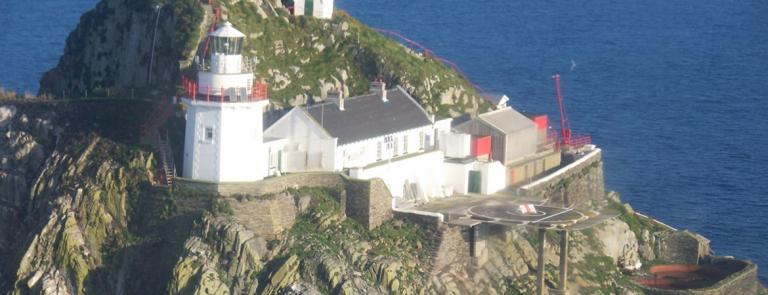
This is reminiscent of the Dioscouri and Gandharva of India, the Kentauros in Greece and the Centaurs in Rome(64). The same kind of myth surrounds Hera and her doppelganger Nephele, mating with Ixion.
In Gaul, Dispater was a Roman god applied to an unnamed Gaulish god of the Underworld. Like Yama, this god was “first man” who settled the Otherworlds and welcomes everyone else to that realm. The Irish Eber Donn serves this role.
Eber Donn or just Donn means ‘brown’. He’s associated with the earth and was the first mortal to die as humans were fighting for their right to exist(in Ireland or in the Universe is a matter of the interpretation of myth). As the first mortal to perish in Ireland he rules the house of the Dead, where souls go. Donn derives from dhuosnos, ‘meaning dark’(O’hOgain 178). He is known as ‘King of the dead at the red tower of the dead’(179). He drowned at Inbhear Sceine in Co Kerry. His physical place is Bull Rock where exists Teach Duinn or the ‘House of Donn’. ‘To me, to my house, you shall all come after your deaths.’ O’ hOgain thinks he’s the Dagda, but I can’t see how this is the case.
We find it in just treating the myths as they are, and Donn as one of the Milesians. People travel to and from the house of Donn into the realm of the living. He was Donn Fírinne at Cnoc Fírinne, where he rode his horse through the sky and had power over the weather. Here he would gather the clouds over his hill, and if there was stormy activity, he was considered to be riding wildly. In the local legend surrounding Donn Fírinne, he leads the wild hunt from this mound in Limerick.
Teach Duinn is across a waterway, the sea off of Co Clare. Yama had to cross a waterway to access and homestead the Vedic afterlife. He had to traverse pravat, meaning ‘waterways’, to get to gavyuti meaning ‘pasture land’(Puhvel 139).
Indo-European Elements of IE Ritual
Earth Mother(s) in IE Myth
The evidence for an earth mother in Germanic culture comes from Tacitus as well as Proto-Indo-European words which are the root of names of gods like Njordr. In Germania 40, for example, Nerthus is described as a land goddess. He translates her as ‘Terra Mater’ literally Earth Mother(Puhvel 205). This goddess was likely not seen as the entire planet. So Nerthus must’ve been seen as the land under the people who worshiped her. In Mesopotamian influenced Greece Gaia is the goddess of all of the Earth.
Eriu, Fotla, and Banba are three land goddesses in Ireland that could potentially fit the model of the earth mother. Tailtiu’s name means broad earth like the Roman name Tellus. Eriu is a motherly figure based on the meaning of her name, “Full”, “Fat”, “Abundant”. In both of these hearth cultures, we can worship the land under motherly fertile goddess motifs.
Drawing from these myths, with modern notions of naturalism and environmentalism, and drawing from RDNA practice, the earth mother is honored at the beginning of every core-order ritual and thanked at the end. We can address her as any number of these goddesses. Anu is specifically identified with the landscape according to Ó hÓgain as well and as the primary sister fo the three that are called the Morrigan, she can be seen as the landscape around the location of the Paps of Anu.
Deities of Land in IE Myth
The goddess Sarasvati meaning ‘Rich in Waters’ is part and parcel to the river she represents. Hers is the richness of fertile soils and is a transfunctional goddess(62). The hymns to specific gods in the Rg Veda are Indra, Agni, and Soma who have 250, 200, and 100 + hymns respectively. Indra is a Sky God, but Agni and Soma are of the Land.
Demeter and Ceres were goddesses of land and crops. Demeter is a goddess of harvest and fertility over the land(129). Her name means mother, though Gaia is certainly the greek earth mother, making Demeter in my worldview a lesser Land Goddess or a sidelining of the Indo-European in favor of the pre-existing Mediterranean influences. This is where cultural influences twist the commonalities. Our picture hawk of Earth Mother with Sky Father as primordial parents is certainly Mesopotamian influenced by the Sumerian Ea. Dyaus, while a sky father, isn’t necessarily outside of the people of the gods, nor is he the personification of all of the heavens like Uranus is. Tailtiu’s name means ‘broad earth’ a meaning essentially the same as the meaning of the Roman Tellus.
Deities of the land are generally honored as Fir Bolg or Vanir in my personal rites. These often take forms of the deities of the occasion or are invoked alongside a trifunctional triad.
Deities of Sea in IE Myth
Njordr had associations with fishermen and those who traveled by sea. In folklore, he was diminished to the Merman Njor. He was next in line as the king over Sweden under Oðinn, preceding his son Freyr. He abandoned his sister as a wife and married Skaði. She could only look at the feet of the gods and thinking she chose Baldr’s feet, she chose Njord’s instead(208). Hler is cognate with the Irish name for the sea god, Manannan Mac Lir.
The Welsh Manawydan parallels this Irish and Manx ‘Son of the Sea’. Manannan is also an Otherworldly god, like Tethra, linking the Otherworld of Immortals to the Sea. He is likely preexisting but is considered one of the Tuatha De Danann(177). He may be cognate with his other namesakes as historicized versions. I think Fintan mac Bochra(Son of the Ocean) is a literary device taken from him to perform functions of the Ard Brehon, just as Othinn served as Gothi over the dismemberment of Ymir. Manannan has otherworldly sea travel tied to his mythology via his coracle, the ‘Wave-Sweeper’.
Deities of the sea are often used as liminal gatekeepers to other worlds in ADF rituals. These take the form of gods who rule over liminal boundaries. In Irish folklore, the dead are ferried to Teach Duinn by fishermen. So this ADF tendency is a well establish Indo-European one. They can often appear as Deities of the occasion, like a midsummer rent-paying to Manannán.
Deities of Sky in IE Myth
Zeus is the head of the divine ‘clan’, to use the word Puhvel uses. He’s the celestial householder or houseman, husband to Hera whom he mates with to better increase crops(130). Linguistically equated to the Proto-Indo-European Dyaus, ‘Bright Sky’ or also ‘Clear Sky’ owing to its brightness to its clarity. Dyaus in India diminished and split into Mitra and Varuna in my opinion, based on their epithets. But he is directly mentioned in his mating with Earth. Thus served the same function as Ouranos who mates with Gaia in Greek myth, while still being a humanoid supernatural primordial immortal.
The Asvins and Usas descended from Dyaus. Heimdallr resembles Dyaus as demonstrated above. Puhvel points how *Dyaus appears in Germanic myth in three distinct ways, as Heimdallr, as the Troth keeping Tiw/Tyr, and in the wintery night sky god *Wulthuz(213). Fjorgynn and Fjorgyn may be the divine sky-earth couple as Frigg’s father and Jord, but we don’t know for sure.
Sometimes in ADF ritual deities of land sky and sea are invoked or called to the fire. This is less common than simply viewing these deities as parts of a celebratory year-wheel based on their myths. Again mostly in deities of the occasion.
Outsiders in IE Myth
The third invasion comes 30 years after Partholon’s plague burial. Nemed came in 34 ships of 30 people each. Their greed keeps them from seeing the perils of the journey and so only a few made it onto shore in Nemed’s single remaining ship. Nemed established the first sign of order on the island, killing Fomorians after enslaving them to dig his forts. He cleared twelve plains for growing and a few lakes burst forth. If you recall, when Indra slays Vtra, the celestial waters are released. The release of waters is an integral creation scheme among the Indo-Europeans, and the Mesopotamian flood myths are also the last chapters in creation, pointing to Proto-IE-Semitic peoples further back.

So the Semitic Flood myths share a common heritage with the Indic rains and Irish lakes bursting forth. Nemed dies after winning three battles with other Fomorians. His children are oppressed, their children enslaved. They rise up and overthrow the Fomorians losing almost all of their ranks. Three tribes separate, two go south and are enslaved by the ‘Greeks’. We use quotes because we believe Greece is a Christian scribe redaction of the Otherworld, and one goes ‘north’ to the Isle of Learning. Presumably back into the part of Otherworld where they learn magic from people who pre-existed and dwell there.
Baldr is recovered when Hermodr rides to Hel to find him. This takes place during his funeral. His wife dies of grief while his bridled horse throws himself into the pyre. Oðinng places his ring on the fire just before this. They can’t move his pyre vessel without the help of Giants. Thus Thorr is being incendiary and tries to crack the skull of a Giantess but is subdued as the Jotun helped them. A Giantess who rides a wolf with snakes as reigns helped shove the vessel into the water while four berzerkers held back the beast(214). Thorr blessed the fire with his hammer but trips a dwarf, Litr who falls into the fire and is burned.

Hermodr went on for nine nights through dark dales and glens, going downward and northward, until he passed the gate of Hel. He found Baldr there on the high seat. Hel agreed to let him return to the world of gods if all of natured mourned his death. In the end, Baldr’s recovery failed because Loki disguised himself as a Giantess who would not mourn him. Hoðr and Baldr will emerge from Hel, however, once Ragnarok occurs(214).
The Outdwellers in these myths is the Jotun and the Fomorians. We see them as Outdwellers or Outsiders because they stand against the gods in most cases, for ignoble and selfish reasons. In the Irish Myths, the gods reiterate sharing, and if we’re to believe Durkheim, this is part of the Celtic belief system. Mortals cannot treat them or make bargains with most of them because their will cannot be moved from chaotic purposes. Instead, we make bargains with the gods who can move these forces. They are demonic but not necessarily evil, and, as a whole, they represent disorganized impulsive Chaos that wants to take down Cosmos, remake it, or exploit it.
In ADF ritual, it is common to pour out offerings to these beings in order to propitiate them. In my own personal experience, the Ashura/Jotun type beings can’t be fought entirely, they must be caged or propitiated to be rid of their influence.
Nature Spirits in IE Myth
In Ireland, the Gods and the sidhe dwell together on the earth(178). I used to think this the result of redaction, but the power of local belief would have persisted into Christianity and I now believe that the Celtic Otherworld intersects with all realms, and is actually many Otherworlds. The Sidhe army consists of otherworldly people who aided Nemed’s Sons against Conand, labeled by the redactors simply as ‘Greeks’. Often called the Other Crowd or the Good Neighbors, they are Seelie and Unseelie. Of the Seelie courts, their Queen is often seen as the Morrigan, though this is unspoken. The dead and the fairies are often confused(O’hOgain 266)(Evans-Wentz 235). The fairies are seen as real invisible entities which must be propitiated if men are to secure their goodwill(Evans-Wentz 226). These fairies were both the spirits of nature and the spirits of the otherworld though they were seen as people. Jenny Butler describes the sidhe folk as having a possible origin in animistic beliefs, envisioning the existence of an invisible people to explain the happenings of nature. In the Irish view, there are not land wights, or spirits of rocks and trees, but rather, elves and fairies who use the rocks and trees as spirit houses.
In Norse paganism, the Alfar are seen similarly as the Fair folk in Ireland. They are more indifferent to mortal humans than the Sidhe-folk for the Irish fair folk seeks to gum up human affairs and even eat us. Around the time of King Aelfric, and probably before, pagans and witches were seen to consort with spirits called the Ylfa(Alfar)(Pollington 51). The world elf comes from ælf in Middle English and relates back to Alfar through a common Germanic ancestor *albh-. The Landvaettir or land wights are the Germanic indwelling spirits of nature.
We invite whatever nature spirits exist and the Fairies to our rituals first. These spirits dwell in the otherworld and this world right here, at a place where all worlds are entwined. It’s important to get their permission before performing rites in a place. And after said permission is given, our rites must include them first on the invite list of cosmic beings. When Romans would conquer new lands, they’d take herbs and touch it to the head of a horse and scatter them. There was a whole roman priesthood devoted to making a conquered land attain ‘well-foundedness’. I view this rite as seeking an equilibrium from the nature spirits after a power transition.
Ancestors in IE Myth
The Romans, Dumezil says, deployed three devices to ensure victory in battle, each associated with IE Triple Ideology. The first was a ritual to Mars, The second was a votum, or votive offering promised to be paid after a victory was ensured; usually a temple(Littleton 104), and the third was a devotio, or a promising of himself, by the general, and of his body and all the bodies of the enemy dead to the subterranean gods and the gods of the earth. In this rite, the enemies of the dead belong to the Roman cognates of Yama. Dispater was a Roman god applied to an unnamed Gaulish god of the Underworld. Like Yama, this god was “first man” who settled the Otherworlds and welcomes everyone else to that realm. Dispater likely means ‘wealth father’. The Irish Eber Donn serves this role(Puhvel 173). Current Irish wake traditions give us ideas about treating the dead and the ancestors but rarely in myth does honor ancestors occur. The closest thing we come to is the practice of erecting cairns which happen in myth quite a lot. Celtic mythology doesn’t have a necromancy example as we see in Odysseus story. Instead, we draw from works like Kevin Danaher’s ‘A Year in Ireland’ for practices in hospitality with the dead, those accounts are mythological, but not pagan. Place settings are left out for mythological Mary and Joseph in December. In that same spirit when place settings are made for the dead, it’s a recognition they live in mythological time, the one moment that surrounds our historical time.

I see mythological precedence for each of these ritual steps which recognize these different classes of beings. I do not find them given the same importance then as they are now. But different times cause us to project different things, al la Durkheim, onto the sacred realms. In some feast rites, we set places for the ancestors, but mostly we invite them second to ritual as they are the closest to us in the spirit world. While the nature spirits exist in this world, the dead are called second in my rites because they are beyond the gates or the otherworldly ways.
Common Motifs in IE Myth
Upperworld
Loki typically tricked the gods into a dilemma, and when pressed, he saved them by ingenuity. An example of this is his contracting a giant proof wall around Asgard. When concerned about the price he sabotaged the work as a mare distracting the stallion, which pulled the rocks, into mating (Puhvel 218). The world of the gods in this myth was Asgard. Because divine beings who are sovereigns of the cosmos dwell there, it considered the upper realm. With qualities of abundance and riches, it matches the blessed isles of Irish mythology. It also has a meadow at its center. Otherworldly meadows and plains are not uncommon to the realms of the gods and upper worlds(Puhvel 139, 140).

Among the Irish, it is not known whether they arrived from the sea or from the sky. This insinuates their Indo-European origins as celestial beings. The stars to them, as far as we know because it is unknown, could be lights lit on otherworldly isles from which the gods come. Obfuscated further in epic myth and monastic imramma or sea voyages, otherworldy isles like Mag Mell, the Isle of Apples, Inis mBan(Rees 316), the Island of Joy(323), the Island of Laugher(322) can inform our view of the underworld. Overall, the Irish have many Otherworlds across the sea. The milky way was named Bealach na Bo Finne, after the milk of the white cow, Boann/Bofind so associating water with the celestial sky is a thing our ancestors did. It is not known whether the Tuatha Dé came from the sea or the sky.
Middleworld
The world of men was called Miðgarðr(218). It was encircled by one of Loki’s children Miðgarðsomr with the Giantess Angrboða meaning ‘Grief boding’. Because Hymir thwarts Thorr’s fishing expeditions for Jormungand, the serpent that encircles Midgard, it seems that Thor is enraged and further compelled to slay monsters. And it seems there is a level of maintenance demons which postpone Ragnarok and the setting of the rule of the gods. Icelanders weren’t above making a mockery of Thorr at times, one thinks of Dagda as a fool wearing little clothing and having oafishness.
Irish sources divide the middle world into directions from a center. These directions or ‘winds’ number in 4 and 12. The 5 ‘fifths’ of Ireland are divided into four directions with a fifth sovereign center. Alwyn and Brinley Rees have a whole chapter on the center and the tale of the setting of the manner of Tara is the mythic source for it. Tara is a hill in Meath as is Uisneach. Tara is which is the king’s hill next to other mounds like the mound of hostages, this is the political center of Ireland. Uisneach is the magical center of Ireland, were the Bealtaine fires were kindled and where Mide kindled the first magical fire for Nemed. With Teach Duinn at the sea, Ireland raised on the cliffs and in the hills, the heavens provide a fine upper realm, Ireland the middle realm, and the Sea the under realms. The fight for Ireland was allegory in the semi-historicized myth of claiming rights to exist in this middle realm. Likewise, as we have mentioned, Greece and Spain, are redacted Otherworldly places.
Divisions Of Middleworld
In Irish myths, the four divisions or ‘fifths’ was centered by the province of Meath, Mide, meaning ‘middle’, which was the seat of the ard-righ/ríon, or high king. This parallels India where there are five tribes and echoed in other IE languages where people are referred to in fifths. The five demes of Sparta or the Philistine Pentapolis. There is an over-king as well in India with a horse sacrifice paralleling the Irish and Roman horse inaugural sacrifices.
In Sweden, there are 12 Things, and in the center is the Allthing. 3 representatives come from each Thing for a total of 36 representatives meeting in the center. This might be seen as a parallel to the 12 windows in the center hall of the Manor of Tara, where there are symbols in the myths about the center rotunda, there are divisions numbering in 5, 9, and 12+1. This is parallel according to the Rees brothers with Odysseus and his twelve warriors. The pillar stone at Uisneach has five sides touching each province. You may also compare the 12 ‘things’ with the twelve winds of color in Irish and Scottish lore, by which weather omens are taken.
Nether/Underworld
Teach Duinn and the realms under the sea in folklore serve this role for Irish Pagans. Eber Donn was the first mortal to die and homestead the cattle pastures of the other realm. The entryway to his house under Bull Rock is like a dolmen or a passageway. It encapsulates the threshold over which the dead must cross into a netherworldly paradise, under the sea, and is across a waterway like Yama or the other waterways. As Donn drowned in a ship, his lands are below us.

Hðr, who features in section 49 of the Prose Edda book Gylfaginning, went on for nine nights through dark dales and glens, going downward and northward, until he passed the gate of Hel. He found Baldr there on the high seat. Hel agreed to let him return to the world of gods if all of natured mourned his death. In the end, Baldr’s recovery failed because Loki disguised himself as a Giantess who would not mourn him. Hoðr and Baldr will emerge from Hel, however, once Ragnarok occurs(214). Hel in these myths is clearly the underworld, where all ancestral mounds lead.
Before downward access to the underworld symbolism was popular, the realm of the dead among the Homerian tales is accessible via the northern shores of Cape Tainaron. Norse Hel, cognate with Greek nerteros, was also located in the North. Odysseus performs rites to the dead on these shores, conjuring mute ghosts who were able to communicate after being offered blood, gaining access to their knowledge. Hades is described as having horses and vegetation(138).
Fire
Bríd is a complex of gods, three sisters. One a smith, another a leech, and finally a poet. Leeches work with herbs and are third functional, smiths are second functional as metallurgical advances were driven by military needs, as is the case today. While the lore doesn’t place Bríd as a goddess of the hearth, she has been historicized in the lore. But you find all of these roles in the first level Scottish Bonesetter, who charms and heals because he has all the tools to do surgery. Smith’s in those days were known to charm their work with work-song magic. We find hearth rituals in prayers and folk magic from the Carmina Gadelica mentioning Brighid. As a goddess of fire in the head, or inspiration, fire in the hand and forge, and fire under the leeches pot, she is a goddess of transfunctional magics, transformation, but above all, fire.
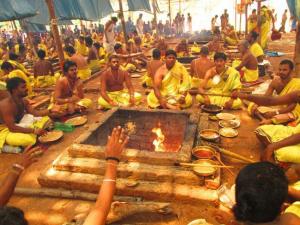
The Magical center of Ireland was the hill at Uisneach in Meath where druids kindled the fires of sovereignty we call Tinte Ceannasach. Coals from these were disseminated to the hearth fires of the citizens. The four main festivals in with Irish names, Bealtaine, Imbolc, Lughnasadh, and Samhain were fire festivals.
Other than Litr above, Logi comes to mind as a Fire Giant. Logi in Swedish means protection and now has come to mean lodging, possibly through its connotations of warmth. In a Germanic hearth culture with ADF and Indo-European reconstructionist practice, Logi or Hálogi meaning ‘high flame’, could be used to deliver the sacrifice, provide warmth and protection. Logi or Loge is the son of Fornjót whose name means ancient giant and is identified with Ymir. Fornjót’s children are Giants of Wind, Sea, and Land via the fire(Stoll).
Wells
The Norns Urð, Verðandi, and Skuld are the Germanic fates mentioned in the Voluspa. The original Norn was Urð with her well Urðarbrunnr under Yggdrasil. The Norse cognate to the Anglo-Saxon wyrd is urðr. Hvergelmir and Mimisbrunnr(Mimir’s Well) are also under the world tree(Puhvel 218).
The Well of Segais is seen as the Irish source of all consciousness and being via the five streams which flow from it. It’s the source of the Boyne River. These mythical streams are associated with the senses. Its waters are so pure they burn hot. Also near Segais, at the top of the River Sinnon is a well called Conalla’s well(Rees 161), and it was the well that Boann challenged, the root spring at the top of the Boyne, as well as the cognate to Mimirsbrunr or the Norn well. It’s the well with the nine hazel trees surrounding it dropping hazelnuts to be eaten by the Salmon of wisdom. This overflowing is mirrored when Cerridwen’s cauldron overflows after Gwion Bach takes the three drops in his mouth.
Trees
Heimdallr might mean world tree, ‘heimr’ means habitat or world, and *dalthu and dallur means ‘fruit-bearing tree’. So with a name like World Tree, being birthed by nine mothers, all giantesses, the Norse cosmic picture begins to make sense. He not only births the classes, but he also births mankind. As one of the Irish First Ancestors, Bile is a name that also means tree. And so the tree may be seen as we see a family tree. They may have drawn literal parallels to genealogical family trees and the local tribal ‘family’ tree or meeting place. The world of men was Miðgarðr, the world of the gods was Asgard. After Ragnarok, a rebirth of the world tree with a new primordial couple will emerge with Baldr and Hoðr to sire a new pantheon(220).
The nine hazel trees which bloom and fruit within the same hour, drop their nuts into the well under them. The salmon there eat these after swimming against the five streams. Eating the nuts(Rees 349) or the salmon grants illuminating inspiration and the gift of instant poetry and prophecy. Five streams flow from the well underneath them. Yggdrasill was also known as Mimir’s Tree, Mimameiðr. Oðinn would commune with this archaic god’s severed head through necromancy(Puhvel 219).
Though not mentioned in mythology, the Bile Uisnigh or sacred tree to of Uisneach in Ireland could be seen as the Dendrographic center of Ireland though there were 5 great trees which were cut down in 665CE(Ellison 495). Billymore is anglicized as An Bile Mór, the great sacred tree. These trees are local centers of the local cosmos, and the one at Uisneach would have been the center of all Cosmi. It compares to Yggdrasil or any symbol of the tribal and kingdom’s sacred center.
Very simply, I think all of these are important and useful to what we do in ADF. ADF’s mottos of why not excellence pushes us to create analogously, all which we can reconstruct. One way we can use divisions of the middle world are to throw lots in bodhran and see which lots fall in the North airt of ‘conflict’ or which lots fall in the center for kingship.
Conjecturing our Modern Worldview
The differences are powerful, however, without the commonalities, Indo-European religious reconstruction seems lacking bones. Using IE motifs, one can immediately spot incomplete or improper reconstructions. Having all the bones, putting a T-rex together still takes a vast amount of expertise. I can determine what will not work in a ritual based on what does or doesn’t work in myth.
Jane E. Harrison in 1903 and 1921 in Prolegomena to the study of Greek Myth and Themis states that myth is ‘what is said’ while the ritual is ‘what is done’. Myth’s original purpose was as the spoken component to ritual acts, is but one side of the ‘ same religious coin’ (15). If you take mythos to mean Word, then it is what is said. This is the single most important thing ADF and other Indo-European priests need to focus on. I wish they would get into their animal, their mythological selves first, and then perform rites.
So if we can’t conjecture about myth, we can’t conjecture about rites. Our treatment of myth starts to look like Christians treat their codified scriptures. There is a lack of mythical conjecture revealing prudishness to the way modern pagans and recons set their standards.
The common themes I can see are the tripartite functionally in Proto-Indo-European society. I try to make the best pagan case for this in other works I’ve put out there by restating Littleton’s and Dumezil’s cases. But in every surviving myth from and IE culture, we have tripartite examples to draw from for conjecture. The structure of how the gods ought to be worshiped, for instance, can be drawn from Deux Premieres and Deux Dernieres, Dumezil’s article on First Gods and Last Gods.
The fire in water concept which grows the cosmos trees whose fruits fall back into the well is analogous with the earth peopling like an apple tree apples. This is Ceis Out of that, you have the wells of wisdom and world trees or cosmos hazels. You’ve got the pole star or central pillar called the axis mundi. In Old Irish, it was called the An Gaelin(Ellis). These all exist in my own hearth culture and many others. The mythological case for Indo-European paganism is real and exists in droves. The problems with Tripartite theory is valid, however, all the criticism doesn’t put it to bed. None of the criticism today has addressed every single point of the theory.
Whether or not these commonalities are the result of commonalities across all of humanity, what we study is how these commonalities are uniquely treated by Indo-European peoples. They worship these functions as an ideology. The items in the Yamna Package, plus the social tripartite ideology, are all going to carry into the works we have and what is useful has been retained. I think that a focus on these will unearth that which carried forward against all resistance. That these traits are constantly being maintained throughout invasions and retained through Christianity, in the same way, reveals how much they meant their original peoples, we can get an idea of their mind and put ourselves in it by pondering what worldviews lend toward such practices.
Sources
Murphy, Gerard. Saga and Myth in Ancient Ireland. Cork: Mercier P., for Cultural Relations Committee of Ireland, 1971. Print.
Ellison, Robert Lee. Ogham: The Secret Language of the Druids. Tucson, AZ: ADF, 2007. Print.
Borovsky, Zoe. Frá Fornjóti Ok Hans ættmennum. N.p., n.d. Web. 09 Mar. 2018.
Littleton, C. Scott. The New Comparative Mythology an Anthropological Assessment of the Theories of Georges Dumezil. Berkeley: U of California, 1982. Print.
Ó hOgain, Daithí. The Lore of Ireland: An Encyclopaedia of Myth, Legend, and Romance. Cork: Collins, 2006. Print.
Puhvel, Jaan. Comparative Mythology. Baltimore: Johns Hopkins UP, 1993. Print.
Rees, Alwyn D., and B. R. Rees. Celtic Heritage: Ancient Tradition in Ireland and Wales. London: Thames and Hudson, 1991. Print.
Wilde, Lady. “The Coming of Lugh.” Celtic Wonder Tales: The Coming of Lugh. N.p., n.d. Web. 22 Nov. 2017.
Witzel, Michael. “Early Sanskritization. Origins and Development of the Kuru State.” Diss. N.d. Electronic Journal of Vedic Studies 1.4 (1995): 2-26. Print.
Céitinn, S. (2017). The History of Ireland. [online] Ucc.ie. Available at: http://www.ucc.ie/celt/published/T100054/index.html [Accessed 2 Apr. 2017].
O’ Buachalla, B. (1998). Foras feasa ar EÌirinn = History of Ireland. 1st ed. [Dublin?]: Irish Texts Society.
Dangler, M. (n.d.). Nine Tenets of Druidic Ritual. [online] Available at: https://www.adf.org/articles/cosmology/nine-tenets.html [Accessed 26 Aug. 2016].
De, S., Haillet, J., de Sicile, D. and Koehler, (n.d.). Diodore de Sicile, Bibliotheque Historique XIX. Paris.
Gray, E. (2004). The Second Battle of Mag Tuired. United States: Kessinger Publishing Co.
Griffith, R. (2008). The Rig Veda: Complete. United States: Forgotten Books.
Guyonvarc’h, C., Frock, C. and Guyonvarc, C. (2002). The making of a druid: Hidden teachings from the colloquy of two sages. Rochester, VT: Inner Traditions Bear and Company.
Hutchison, D. (2009). Links to pagan ritual in medieval Irish Literature.(34.1), pp.113-143.
Jameson, S. and Bereton, J. (2014). The Rigveda: Earliest Religious Poetry of India. The University of Texas, South Asia Institute.
Kaktou, P. and Mauropoulos, T. (1997). Athēnaios Deipnosophistai. Athēna: Kaktos.
Koch, J. (2005). Celtic culture: A historical encyclopedia. Santa Barbara, CA: ABC-CLIO.
MacKillop, J. (2004). A dictionary of Celtic mythology. New York: Oxford University Press.
Newberg, B. (n.d.). Ancient Symbols, Modern Rites.
Pander, (n.d.). Full text of “Sanas Chormaic. Cormac’s glossary”. [online] Available at: https://archive.org/stream/sanaschormaicco00stokgoog/sanaschormaicco00stokgoog_djvu.txt [Accessed 28 Aug. 2016].
Pollington, Stephen. Leechcraft: Early English Charms, Plant Lore, and Healing. Ely: Anglo-Saxon, 2008. Print.
Rees, A. and Rees, B. (1961). Celtic heritage. 1st ed.
Serith, C. (n.d.). Sacrifice, the Indo-Europeans, and ADF. [online] Available at: https://www.adf.org/articles/cosmology/sacrifice-ie-adf.html [Accessed 26 Aug. 2016].
Stoll, G. (1996). Havamal. 2nd ed. United States: Vaka-Helgafell.
Thomas, K. (n.d.). The Nature of Sacrifice. [online] Available at: https://www.adf.org/articles/cosmology/nature-of-sacrifice.html [Accessed 26 Aug. 2016].


